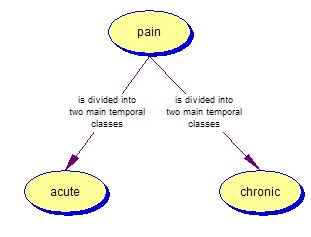Acute and chronic pain are different clinical entities. Acute pain is provoked by a specific disease or injury, serves a useful biologic purpose, is associated with skeletal muscle spasm and sympathetic nervous system activation, and is self-limited.
Acute pain is caused by injury, surgery, illness, trauma or painful medical procedures. It serves as a warning of disease or a threat to the body. It generally lasts for a short period of time, and usually disappears when the underlying cause has been treated or has healed. Unrelieved acute pain, however, may lead to chronic pain problems that may result in long hospital stays, re-hospitalizations, visits to outpatient clinics and emergency departments, and increased costs.
Acute pain begins suddenly and is usually sharp in quality. It serves as a warning of disease or a threat to the body. Acute pain might be caused by many events or circumstances, including:
- Surgical Pain
- Traumatic Pain, example: broken bone, cut, or burn
- Muscle strain
Acute pain might be mild and last just a moment, or it might be severe and last for weeks or months. In most cases, acute pain does not last longer than six months, and it disappears when the underlying cause of pain has been treated or has healed.
Chronic pain, in contrast, may be considered a disease state. It is pain that outlasts the normal time of healing, if associated with a disease or injury. Chronic pain may arise from psychological states, serves no biologic purpose, and has no recognizable end-point. Both acute and chronic pain are an enormous problem in the United States, costing 650 million lost workdays and $65 billion a year. Chronic pain is pain lasting longer than three months or past the time of normal tissue healing. Physical effects include tense muscles, limited mobility, a lack of energy, and changes in appetite. Emotional effects include depression, anxiety, anger, and fear of re-injury. There are several different types pain which may result in chronic pain.
The therapy of acute pain is aimed at treating the underlying cause and interrupting the nociceptive signals. The therapy of chronic pain must rely on a multidisciplinary approach and should involve more than one therapeutic modality.
Common Rx Medications For Pain:
1. NSAIDS (Non-steroidal anti-inflammatory drugs)
2. Anticonvulsants
3. Antidepressants
4. Anesthetics
5. NMDA receptor antagonists (e.g. Ketamine)
6. Muscle relaxants
7. Blood Pressure Medication
8. Anti-Psychotics
9. Opiates
10. Medication Advances Coming Soon
11. Research Advances
Non-Opioid Pain Treatments
- General Pain Relief – Nondrug, Complementary, Alternative
- Acupuncture
- Adjuvant Drugs
- Biofeedback
- Botulinum Toxin (BOTOX) Injections
- Cold or Heat Therapy
- Electroanalgesia (incl. CES, PENS, SCS, TENS, & Others)
- Exercise Therapy
- Headache – Drug & Non-Drug Therapies
- Herbal Medicines & Dietary Supplements
- Interventional Pain Management
- NSAIDs & OTC Analgesics
- Nuclear Medicine
- Physical Therapies (plus Massage & Shockwave Therapy)
- Psychological Interventions (plus Hypnosis & Music)
- Topical Analgesia
